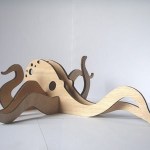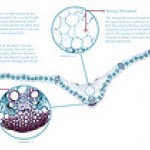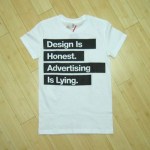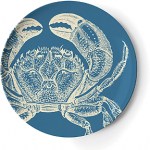design
One of the sucky things about viral interest in offbeat art from small vendors is that it always immediately depletes the supply. Like this fabulous minimalist plywood octopus from inthewoods' etsy shop. Sure, you can still get a plywood squirrel with a plywood acorn, but where's the sinister, feverish Cthulhulian majesty in that? Frustrated now!
Via monoscope
Check out this concept artwork called "Office Grass". What is it good for? Well, for one thing, to patch its apparently coincidental inverse artwork, "Dead Pixel in Google Earth:"
In 1976, NASA Administrator James Fletcher noted that "The question, 'What is feasible?' can be finally answered only by future historians." He was talking about the elaborate plans for space habitats the agency had spent a summer noodling over, but the same remark could have been made to the incredulous before the first moon landing, for example -- or before the birth of transoceanic voyages in the 14th and 15th Centuries.
So begins of one of my favorite pieces of utopist NASA detritus, a document called Space Settlements: A Design Study, made over the course of a 10-week workshop at the…
Jewelry designer Delfina Delettrez is young, a fourth-generation member of the Fendi family, and apparently obsessed with anatomy. Her most intriguing creation is a Skeletor-like carpal gauntlet:
The silver hand will cost you about $24K. If you haven't got that much disposable income, she also does smaller pieces: earrings and necklaces inspired by eyes, lips, spiders, cephalopods, frogs, etc. They're pretty, but I keep coming back to that hand and thinking it's so cynically appropriate to put a bony skeleton hand on a fashion model.
Found via haute macabre
No, it's not how evolution really works, but it's awfully cool anyway.
The Experiment from Colin Trenter on Vimeo.
I love Photoshop, but am I the only one who thinks this resembles a cross between a Rorschach test and a SyFy Channel commercial?
Zea Poster from m f's flickr stream
Michael Franklin, Rochester Institute of Technology
One of the ways in which I can foresee Web 2.0 applications changing the culture of science is by increasing avenues for mentorship. Web apps allow students from different departments, universities, and nations to connect, collaborate, and exchange advice. This can mean career-changing help for students at small institutions (or for those at large institutions with poor interdepartmental relations or a dearth of experts in a particular field). I'm not just talking about help troubleshooting protocols; far…
Algae filament necklace
Pam at Phantasmaphile alerted me to Nervous System, a jewelry company founded by MIT grads Jessica Rosenkrantz and Jesse Louis-Rosenberg. Nervous System "creates experimental jewelry, combining nontraditional materials like silicone rubber and stainless steel with rapid prototyping methods. We find inspiration in complex patterns generated by computation and nature."
While their various lines don't look quite as I expected - I was anticipating something Haeckel-like for "radiolaria" and neuronal for "dendrite" - they are intriguing and definitely "feel" organic.…
Bora's comment on my previous post (Could beautiful design save newspapers?) got me thinking about the distinction between aesthetics and advertising. Here's one Twitter-worthy take on it:
Available at the Grandburo online store.
Via Kingdom of Style
Lately, I've been seeing a lot of dinnerware that's just too fascinating to cover with food. Like Hiroshi Tsunoda's Bodylicious plates, available at DesignCode. According to Street Anatomy, Tsunoda was
inspired by Nyotaimori, a tradition where food is presented on a naked woman's body and used as a tray. Nyotaimori is also referred to as body sushi, and requires the person to practice laying for hours without moving.
Wow, I'm not sure what to say. But at least the plates are equal opportunity: there's a Bodylicious Y set too!
Moving from Homo sapiens to marine invertebrates, these…
Well yes it was a joke. But it was based on the inappropriate manner in which the well-known work on lateral transfer was reported by New Scientist as showing that Darwin was wrong. That genes occasionally cross over taxonomic borders among single celled organisms by transduction (viral exchange), conjugation (sharing plasmid DNA) and transformation (reuptake of naked DNA in a medium) has been known for a while. What this showed was that gene trees and taxa trees don't exactly coincide. But for the animals and plants Darwin mentioned, evolution still runs in trees.
The other thing I was…
Jacek Utko argues that there is no convincing reason why newspapers should survive - but that good design might be able to transform them into something more successful. In addition to numerous awards, Utko's fearless use of white space, bold color, and dramatic imagery has won significant increases in readership (up to 100%) for several Eastern European newspapers.
A real newspaper redesign involves more than changing the layout. The layout is essential, but by no means the only element. First we define the goal, later the necessary content-changes, and only then do we get to design.…
A new study into the transfer of genetic material laterally, or across taxonomic divisions, has shown that evolution does not proceed as Darwin thought, and that in fact the present theory of evolution is entirely false. Instead, it transpires that lateral genetic transfer makes new species much more like Empedocles' "random monster" theory over 2000 years ago had predicted.
Publishing in the Journal of Evolutionary Diversions, the major journal in the field, Professor Augustus P. Rillful and his colleagues of the paragenetics laboratory at the University of Münchhausen in Germany have shown…
Eight choices for the best example of a design flaw.
#2
#3
#4
#5
#6
#7
#8
These were forwarded to me by a colleague, who had them forwarded to her by a friend, who, guess what, had them forwarded from somewhere else. I thus do not know their origin. The pictures are either (a) legitimate, (b) fabricated, or (c) doctored versions of legitimate things. I don't know.
My job, for most of the past six weeks, has been to align cryptic old maps with existing digital data, so that points labeled in small, blurry fonts can be entered into a database. I am not going to show actual screenshots of my work - even if I gave away no useful information to the opposing legal team, it would be bad luck - but here is an artist's impression:
Extracting information from this pathetic excuse for a usable map is, in fact, a learned skill. I only realized this a couple of weeks ago, when I sat down with the company's graphic designer to show her how to do what I was doing.…
Ian Musgrave has a brilliant post showing that Dembski's revisiting of the old creationist canard that Dawkins' 1984 Weasel program, designed to show that random variation and selective retention can "evolve" a target phrase, in this case Shakespeare's "Methinks it is a weasel" (oops; I nearly had my own mutation there - I typed "methings"), is a load of old cobbler's. Of course we expect nothing less from Ian*, and nothing better from Dembksi.
* But my title is better than his.
A while back I tossed up some of Callie Shell's photos of Obama, and the post turned out to be one of the more popular here at Neuron Culture. Recently Soulcatcher Studios, the site that is running an expanded version of that slide show, has a portfolio of the lovely, strange, and arresting 1928 master work of photographer Karl Blossfeldt: Urformen der Kunst, or "Art Forms in Nature."
Karl Blossfeldt (1865-1932) was a German instructor of sculpture who used his remarkable photographs of plant studies to educate his students about design elements in nature. Self-taught in…
In middle school, my friends and I secretly referred to athletic jocks as "creationists." The joke was, of course, that they -- with their neanderthal postures, fixation on brute strength and obsession with the less decorous emissions of the human body -- were "less evolved." Of course, this is before teaching evolution in schools was made illegal (or whatever).
It is in this spirit of snickering precociousness that I offer my birthday greeting to Charles Darwin, who would have been 200 years old today. Thanks, old chap! Many accolades are due; in your honor, and at the behest of SEED…
Theologians can be monumentally stupid when they look at things through their doctrinal spectacles, especially when it comes to science. Since they think everything is theological, it must have a theological standing, either good or bad, and so they will undergo the most amazing gymnastics to achieve this outcome. Here's an example, by Anglican Bishop Tom Frame of the Charles Sturt University theological school:
The problem I face is weariness with science-based dialogue partners like Richard Dawkins. It surprises me he is not chided for his innate scientific conservatism and metaphysical…
Larry Moran points us to the following video on what science is and why pseudoscience is not to be taught or accepted without serious evidence (which makes it science). My only comment to add is that emotional appeals are information and evidence, but they are information and evidence about the speaker, and not about the things that are being spoken of.
There are a number of people trying to give short definitions of science on the blogs right now (see here). I have a one line definition that I think captures everything I want it to, and nothing else:
Science is the process of saying as much…
The website www.talkorigins.org is now back up, although links to the temporary archive www.toarchive.org/ still work for now. The story is roughly this - the company (joker.com) we bought the domain name from reassigned the IP number for the site as part of changing their data centre. They apparently sent an email notification to the administrator - Wesley Elsberry- but that went (you guessed it) to the email at the domain name. Since the domain no longer was active at the IP#, Wesley never got the email, and because we couldn't use the registered email address to contact joker.com, they…








